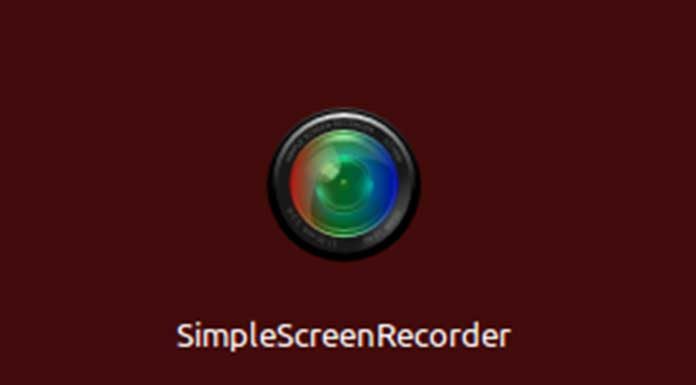Linux desktop registration is a highly sought-after feature for gamers and business professionals alike. As the name suggests, Simple Screen Recorder is a simple yet solid screen recording tool. Find out all in this article.
What Is A SimpleScreenRecorder (SSR)?
SimpleScreenRecorder (SSR for short) is a utility that permits you to rapidly and straightforwardly record your Linux work area. It is accessible for some Linux working frameworks as a straightforwardly installable bundle, or it can likewise be auto-gathered by following the means on the SSR GitHub page. SSR additionally offers every one of the elements you want, for example, multi screen recording, without excessively confusing the connection point. The fundamental SSR connection point is exquisite and all-around planned.
SimpleScreenRecorder Installation
To install SimpleScreenRecorder on your Debian / Apt based Linux distribution (like Ubuntu and Mint), run the following command in your terminal: sudo apt install simplescreenrecorder. If you also want to register 32-bit OpenGL applications on 64-bit based operating systems, you must also do the following: sudo apt-get install simplescreenrecorder-lib:i386. There is also a PPA repository (works for both Ubuntu and Mint), which allows you to get the latest version easily:
- sudo apt-add-repository PPA: Maarten-Baert / simplescreenrecorder
- sudo apt-get update
- sudo apt-get install simplescreenrecorder
The current variant in the focal Mint 20 vault is 0.3.11. While assuming you introduce the PPA, the exhibition is 0.4.3. The total changelog is accessible in the GitHub store. The most recent variant has a helpful “Avoid this page” choice for the presentation page. What’s more, there is another choice, “Record full screen with cursor,” and the choice to record the V4L2 gadget. The new connection point looks like it contrasted with the 0.3.11 point of interaction above. For establishment choices for other working frameworks, you can see the Downloads part of the SimpleScreenRecorder page on the engineer’s site.
The SSR Input Profile
Utilizing SimpleScreenRecorder is fast and straightforward. When the application is begun, in the wake of shutting the presentation page (which can be skirted in resulting renditions), a brief exchange box is shown that permits you to rapidly choose any progressions to the vital settings. We should investigate the fundamental choices we’re probably going to use exhaustively. The video input determination permits you to set the recording window to a predetermined screen, all screens, fixed square shape, and so forth.
We can likewise follow the cursor, and when this choice is chosen, the helpful “Record full screen with cursor” checkbox opens up. Again, we can record OpenGL straightforwardly and, surprisingly, a V4L2 gadget (for example, a webcam or catch card). Then, we can set our casing rate and any scaling choices. An edge pace of 20-30 ought to be adequate for making business introductions and so forth. You might need to expand this number for smooth development in games somewhat. We can likewise assume we will record sound and select the sound information source.
The SSR Output Profile
Once the input profile configuration is complete, you can save it with the Save option at the top of the dialog, and clicking the Next button to continue will take you to the output profile selections. Here we can set the filename to save the recording and select the video container format we will use to do it. Other video container options available are MP4, WebM, OGG, and even an “Other” selection that allows you to select any other container format available on your system.
Next, we can select our codec (better to leave it on H.264 with a corresponding Matroska (MKV) or MP4 container format specified above, unless you have a good knowledge of codecs and video containers). Next, we select the constant speed factor (critical). A lower value for the constant speed factor (CRF) will result in better quality, with 0 lossless, although coupled with larger resulting file size for recording. A range of 15 to 23 is usually the happy medium.
We can then set up our video preset, where again, slower selection will result in better quality, although the machine could be significantly more taxed. The best idea is always to try a few different combinations of settings and see what the final recordings look like. We can also select either Audio codec or bit rate. A bit rate of 128 would provide reasonable audio quality, although a setting of 192 or higher may offer better audio quality. Going to around 256 is not recommended for standard recordings.
The SSR Registration Interface
When you have finished configuring the output profile, you can save it with the Save option at the top of the dialog, and clicking the Next button to continue will take you to the final registration interface. In this dialog, we immediately begin recording if we choose to do so. It will also allow us to unregister, returning us to the previous screen (the output profile selection dialog). Once the recording is finished, it can be saved, and we can also start a live preview. The live preview can be beneficial to get an idea of the area that will be recorded and see if the audio input works well and not at low/high volume.
We can set up a schedule using the schedule option ( Edit schedule button) and activate it. We can also see a detailed event log which can help with audio and video troubleshooting if things go wrong. Finally, the overview of the real-time information provides a lot of helpful information on how our recording is going/working during recording and partial information (such as the number shown in FPS in, which shows us the number of input frames per second) while we are previewing our selections, but not registering yet.
Also Read: Find The Right Video Conferencing Software For Your Company


